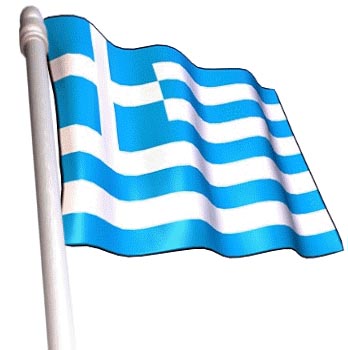New Acropolis Museum opens - worthy rival to British Museum
 Athens - To design a museum that is accessible and welcoming is a daunting task for any architect. To create one to stand at the foot of the Acropolis, revered as one of the great achievements of man, could be considered a nightmare.
Athens - To design a museum that is accessible and welcoming is a daunting task for any architect. To create one to stand at the foot of the Acropolis, revered as one of the great achievements of man, could be considered a nightmare.
In accepting the challenge, Swiss-born architect Bernard Tschumi pulled off an impressive accomplishment - a building that is majestic, while complementing the architectural grandeur of the Parthenon.
The new museum, which is scheduled to open on Saturday, is meant to demonstrate once and for all that the Greeks can look after the hundreds of marble sculptures, friezes and metopes from the ancient Acropolis as well as, if not better than, the British Museum that has housed them for close to two centuries.
More than half of the surviving Parthenon sculptures were removed from the temple by Lord Elgin, the British ambassador to the Ottoman Empire in the early 19th century, and sold to the British Museum.
Britain's government maintains that the sculptures, which include depictions of religious and mythological scenes, legally belong to the British Museum and insists that they will never be returned.
The British have long argued that Athens lacks a proper display space to ensure the safety and preservation of these priceless antiquities.
The Greeks, it appears, are set to finally prove them wrong.
"The Acropolis Museum is a local museum. It is a museum solely dedicated to the Acropolis - nothing more, nothing less," Alexandros Mantis, director of the Acropolis Ephorate, told the German Press Agency dpa.
"Unlike other big European museums such as the Louvre in Paris and the British Museum in London, this museum is the only one of its kind, which includes finds and artefacts from one single archaeological site - the Acropolis."
Situated on a site filled with ruins from 5th century BC to the 12th century, the three-storey, 130-million-euro (182-million-dollar) museum was controversial almost from its conception.
Under the watchful eye of hundreds of archaeologists, Tschumi found a way to display the treasure trove of relics discovered during construction by raising the entire building on huge concrete columns or structural supports, which enable the museum's entry plaza and first floor to hover over the site.
He also added wide expanses of glass that are cut into the floor throughout the museum to allow visitors to look down into the ruins as they move around.
"There are two things that Tschumi had to take into account when designing the museum - designing the upper gallery to the exact dimensions and orientation of the Parthenon and accommodating the excavations below - an enormous project," said archaeologist Stamatia Eleftheratou.
Pointing to an ancient road from the concrete canopy that extends over the main entry plaza, Eleftheratou said the first level of the museum is actually the dig itself and the subterranean remains of the ancient town it uncovered.
Hundreds of archaeologists worked on the excavation for seven years and filled in the site with truckloads of sand for protection during construction.
They can now be seen painstakingly uncovering remains of villas, bathhouses, cisterns and workshops for the museum's opening.
"Thankfully, due to the construction of the new museum we were able to conduct the biggest ever dig within the walls of Athens' ancient city and were given an insight into people's daily habits and the way they worshipped," said Eleftheratou.
The site uncovered relics ranging from children's toys and cooking utensils to a near perfectly preserved 4th century BC marble bust of Aristotle and a statue of the eastern deity Zeus Heliopolites.
"We wanted the museum to be natural procession that imitates the walk up the Acropolis slope to the Parthenon temple at the top of the hill," said Mantis.
"The idea is to keep the conditions as close to those of the original Acropolis as possible, with natural sunlight and no glass showcases."
The main gallery, with its smooth marble floors and polished concrete pillars, is home to the museum's permanent collection of 4,000 objects, including five of the original six Caryatidis or Kores of the Erectheion as well as sculptures of gods dating from the 5th century BC Archaic period.
The highlight is the top floor gallery - the museum's centrepiece.
Enclosed entirely in glass and rotated 23 degrees to parallel the Parthenon, which is only 244 metres away, the gallery provides visitors with a direct view of the ancient temple. The layout is a copy of the Parthenon, with a colonnade set around a sacred inner temple chamber.
Here, the 160-metre-long frieze has been mounted in an unbroken sequence, with the original Greek blocks of the frieze coated in a soft brown patina standing alongside the white plaster copies of the sections removed by Elgin.
Athens holds only about 40 per cent of the remaining marble sculptures. The majority are on display at the British Museum or are with private collectors. (dpa)